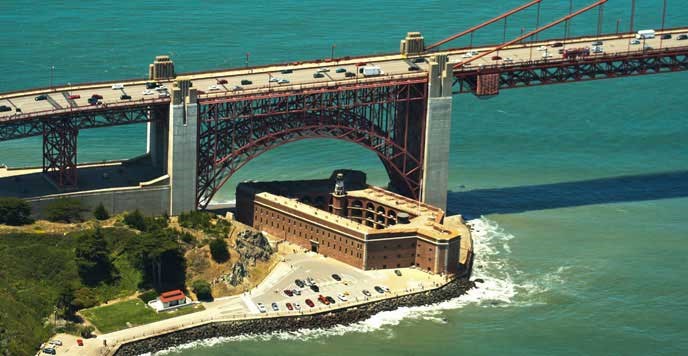Featured Image from: National Park Service
Look around your city and you might find several buildings that stand out, and not because they’re new. On the contrary, while the world around them evolves and old, run-down buildings turn into modern skyscrapers, these old buildings are a reminder of the city’s past, preserved not only through legal means, but by the protests of locals every time a corporation tries to demolish it in favor of a new branch for their business.
This is the protection old buildings get when they are labelled a national historical landmark. Over 2,500 landmarks are scattered around the United States. Most people assume that attaining this title prevents the building from being demolished in favor of newer real estate projects, but as it turns out, earning that title by surviving the test of time does not guarantee its survival.
National Historic Landmark
A National Historic Landmark (NHL) is any site or building that is so culturally and historically significant in our past that the government has decided to provide it with a certain amount of protection. There are around 90,000 historical places, but only 2,500 are considered landmarks. Some of these landmarks aren’t in the United States, and are in former and current commonwealths, territories, and countries. You can find these landmarks in Puerto Rico, Micronesia, Morocco, and other neighboring countries.
Criteria for National Historic Landmarks

The government deems a site as an NHL based on several criteria. First, the site must be a place where an important event of “national historical significance” happened, and it should be backed up with evidence. Second, it can be the home or workplace of a prominent person that made history. Third, it must be a part of history that shaped the nation and the way we live today. Fourth, it must have good design and construction, since it will be restored and maintained to survive. Fifth, it must be a place that highlights the way of American life in the past. And sixth, it must be an archeological site that yields significant information to our history.
Upon their property becoming an NHL, NHL owners have the option to display a bronze plaque announcing the property’s status. While the National Park Service provides technical preservation advice, this will be completed by the owner using tax incentives and tax credits they earn from the NHL.
A Landmark Can Still Be Torn Down
Despite the criteria, however, the government can’t guarantee that the place will be protected indefinitely. The government will provide ways to preserve and restore the NHL, but they have never offered guarantees. According to David Bush of Preservation Houston, it’s a common misconception that NHLs will never be torn down once it enters the listing. And apparently, that belief has never been true.
Looking at the history of the National Register of Historic Places, you’ll find that 982 entries were removed in 1999 because they were torn down that year. And the 1886 station of the Army’s Buffalo Soldiers in New Mexico was made an NHL in 2004 only to be put up for sale in 2014 due to lack of funding.

There are multiple reasons why a building is put up for demolition. This includes the building becoming obsolete in terms of function, such as when large shopping malls do not have enough tenants to operate. Sometimes, a building is obsolete in terms of its technical requirements, such as buildings that cost too much to restore and not worth the profit you could get from it. The building could be underdeveloped, and thus unsafe to use in terms of regulations and zoning policies. Or it can just be unfeasible to keep a building up. While many think the NHL title protects an old building for these reasons, that’s actually not what the government does.
Why the Government Can’t Save All the Buildings
When a building is declared an NHL, the government offers tax incentives and tax credit for anyone who can invest and preserve it. It’s an effective measure for some buildings, since some landowners may benefit from preserving the building rather than demolishing it and selling the land to property developers. A historic home can turn into a profitable museum or a hotel, but some buildings like a large dome or a house too out of the way isn’t a very profitable outlet.
Private citizens or organizations get economic incentives, but there’s not much else the government provides to convince people to preserve their own NHLs.
What NHLs Need
What’s lacking for many NHLs now isn’t government support, but rather sustainable funding. As far as 2014, we’ve seen multiple programs to develop funding for preserving historical sites cut down in favor of other programs.

Many would argue that the government is doing enough and that our taxes should go to better use than just preserving something outdated. But to do that would be to slowly erase traces of our history. Compared to other civilizations, American history only has only about four centuries. And by cancelling it out in favor of another carpark or another skyscraper, we’re removing that history in favor of capitalist ideals.
That’s not to say, however, that buildings with no purpose shouldn’t go undemolished. But when you have a building that’s already marked an NHL, shouldn’t that afford some type of assurance that everything will be done to keep it standing. If people were more informed of a building’s status as an NHL and its eventual demolition due to lack of support, wouldn’t more people in touch with their history choose to support it?
Sadly, having the title of a National Historical Landmark does not guarantee that old buildings or sites that have shaped the way our society works today will survive. While we believe that cities are always meant to change, landmarks that have had importance in history have surely earned their place in history?



